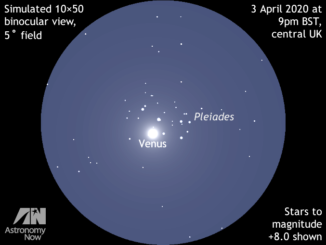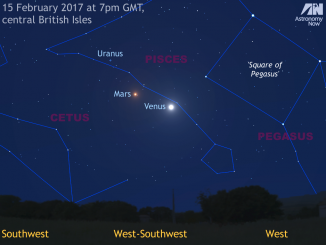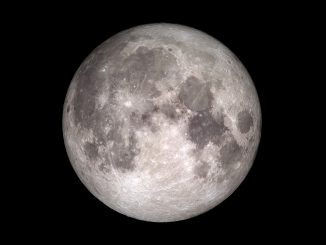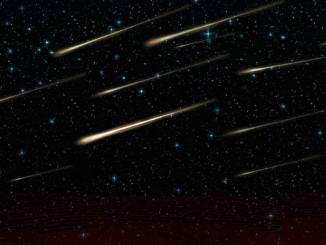
Planet Venus photobombs the Pleiades (Seven Sisters) 1–5 April
As April 2020 opens, dazzling Venus at dusk is drawing ever closer to the magnificent Pleiades (Seven Sisters) in the constellation of Taurus. The brightest planet makes its closest approach to this famous open star cluster on the UK night of 3 April, when typical 10×50 binoculars and small telescopes will deliver memorable views around 9pm BST.









